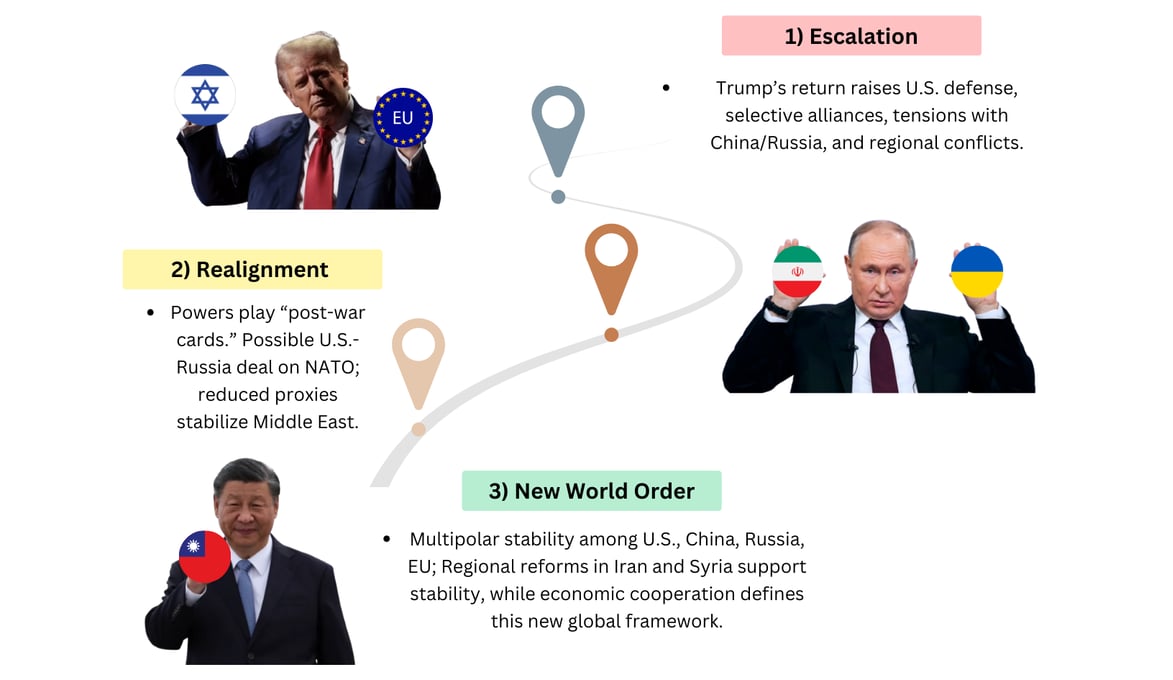After the Dust Clears: Who Will Command the New World Order?
As global conflicts redefine international power dynamics, the question remains: Who will command the new world order? In this in-depth exploration, we examine the potential post-war scenarios, the factors driving global stability, and the pivotal role of the next U.S. president—whether it’s Kamala Harris or Donald Trump—in shaping the future. Discover how today’s strategic decisions could set the course for a cooperative world or a divided one, and what this means for peace, power, and progress.
9/30/202411 min read
Introduction
With major conflicts unfolding around the world—from Ukraine to the Middle East, and growing U.S.-China tensions—the global landscape is facing significant shifts. Predicting precisely how and when these wars might end is nearly impossible, given the many unpredictable twists that shape conflicts. However, history and current trends allow us to forecast what the world might look like once the dust settles.
This blog explores various post-war scenarios, drawing from historical patterns to identify likely paths the world could take. By focusing on the key factors that shape post-war outcomes, we’ll map out potential futures and analyze how the next U.S. president—whether Kamala Harris or Donald Trump—could influence the direction of the global order.
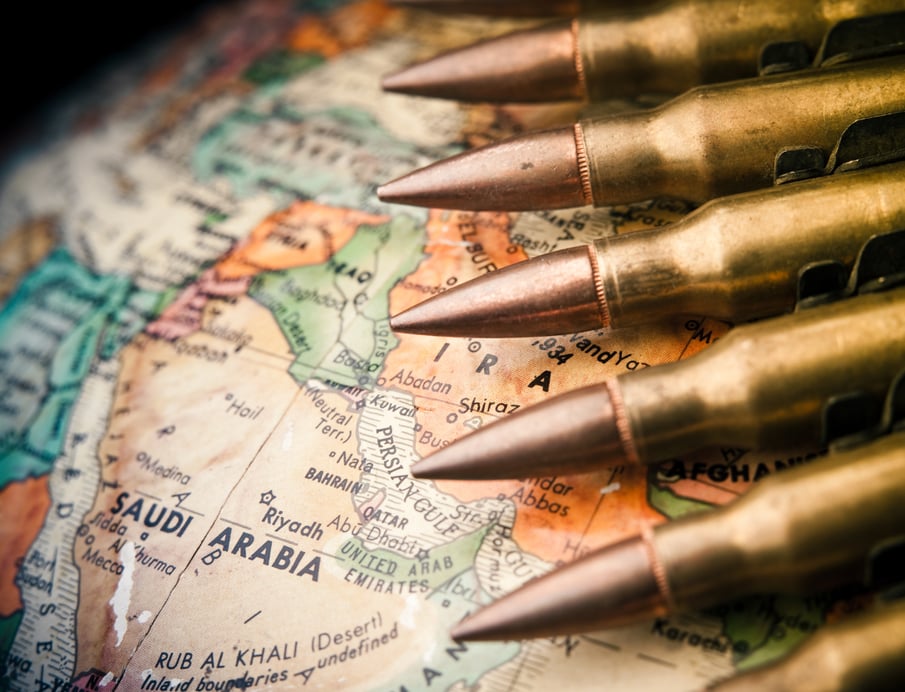

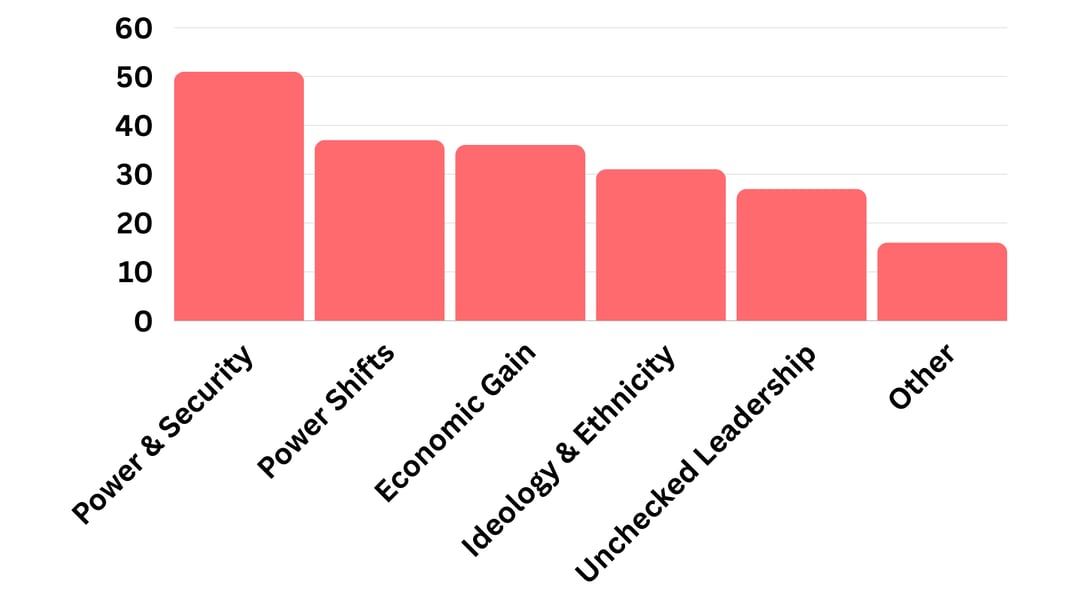

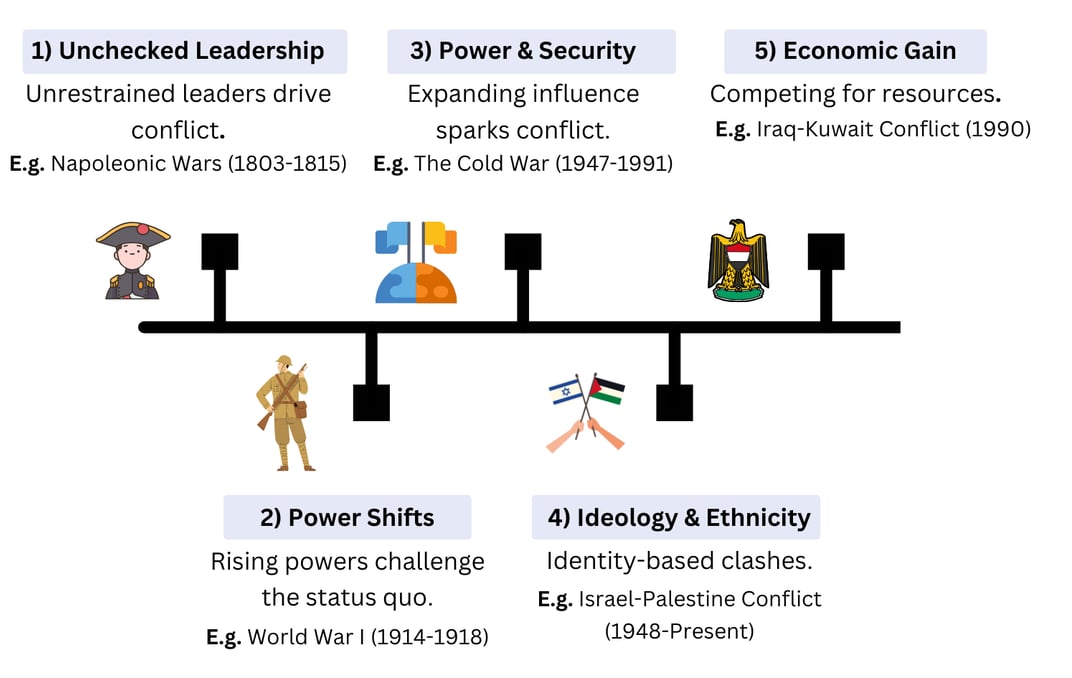

Section 3: Patterns in War Drivers and Outcomes (18th and 19th Century Extra-State Conflicts)
Data from the Correlates of War project enables us to analyze key patterns in the motivations and resolutions of Extra-State wars, especially in the 18th and 19th centuries. This section categorizes conflicts by their Start Drivers (motivations for starting wars) and End Drivers (modes of resolution), providing insight into historical patterns that shaped conflict dynamics. Each table aggregates data to offer a clearer view of how and why these conflicts arose and were resolved.
1. Aggregate by Start Driver
The chart below categorizes wars by their primary motivations, reflecting how specific drivers frequently led to conflict.
Explanation: Military Victory stands out as the most common resolution, reflecting the decisive nature of many conflicts in this period. Negotiated Peace and Diplomacy also accounted for a substantial portion of resolutions, indicating that prolonged conflicts often concluded with diplomatic solutions when victory was unattainable.
3. Top 3 Scenarios by Combined Start and End Drivers
The most common combinations of Start and End Drivers in Extra-State conflicts are as follows:
The Pursuit of Power and Security → Military Victory: 32 wars
Example: World War II (1939-1945) – World War II was driven by Germany's ambition to expand its power and secure dominance. Hitler's quest for a "Greater Germany" led to invasions across Europe, triggering a global conflict. The war ended with an Allied military victory, leading to the unconditional surrender of Axis powers and extensive political restructuring in Europe and Asia.
Economic Gain and Resource Competition → Negotiated Peace and Diplomacy: 20 wars
Example: Iraq-Kuwait Conflict (1990) – Iraq’s invasion of Kuwait was fueled by economic motivations, specifically control over valuable oil reserves. Although the initial phase was military, the conflict ended diplomatically, with a U.S.-led coalition restoring Kuwaiti sovereignty while stabilizing oil supply chains through negotiation.
Shifts in Power Dynamics (Power Transitions) → Stalemate and Ceasefire: 18 wars
Example: Iran-Iraq War (1980-1988) – Driven by regional power ambitions, this conflict became a prolonged stalemate. Both Iran and Iraq were unable to achieve a decisive victory, leading to a U.N.-brokered ceasefire after eight years. The war exhausted both nations’ resources and significantly reshaped Middle Eastern power dynamics.
Insight: These combinations highlight that power dynamics often led to military resolutions, while resource-driven conflicts more frequently concluded through negotiation. Shifting power dynamics sometimes led to stalemates, as both sides found themselves unable to secure decisive victories.
Section 1: Why Do Wars Start? Key Causes and Examples
Wars often arise from strategic, economic, or ideological motivations that push nations to conflict. Some recurring causes include:
Power and Security: Nations seek to protect themselves and expand their power, often leading to arms races and territorial expansions.
Example: The Cold War saw the U.S. and Soviet Union in a security-driven competition, resulting in proxy wars and nuclear buildups.
Shifts in Power (Power Transitions): Rising powers threatening established ones can lead to conflict, known as the Thucydides Trap.
Example: WWI began partly due to Germany’s growing power, which alarmed Britain and France.
Economic Gain and Resource Competition: Control over resources, like oil or trade routes, often sparks conflicts.
Example: Iraq’s 1990 invasion of Kuwait aimed to secure oil resources and improve its economy.
Ideological and Ethnic Conflicts: National identity and ideology can escalate tensions, especially when cultural or religious ties are involved.
Example: The Israel-Palestine conflict combines ideological and territorial disputes with deep-rooted religious significance.
Unchecked Leadership: Leaders with unchecked power may push for war, driven by personal ambitions or miscalculations.
Example: Napoleon’s empire-building ambitions led to devastating wars across Europe.
Understanding these motivations helps us analyze today’s conflicts and potential post-war scenarios.
Section 2: How Do Wars End? Key Resolution Patterns
Wars end in various ways, each with unique impacts on stability and future conflicts:
Military Victory: One side decisively overpowers the other, leading to occupation, regime change, or restructuring.
Examples: WWII ended with an Allied victory and political restructuring in Germany and Japan; the Napoleonic Wars concluded with Napoleon’s defeat and the restoration of European monarchies.
Negotiated Peace: Prolonged conflict often ends with diplomatic negotiations, creating treaties and territorial adjustments.
Examples: The Treaty of Westphalia in 1648 ended the Thirty Years' War by promoting sovereignty principles; the Good Friday Agreement (1998) resolved Northern Ireland’s “Troubles” through power-sharing.
Compromise: Both sides agree to terms and concessions, acknowledging unsustainable resistance.
Examples: The U.S. Civil War ended with the Confederacy's surrender, promoting unity and healing; the 2006 Israel-Hezbollah conflict ended with a ceasefire without clear victory.
Economic Exhaustion and Collapse: Wars sometimes end when the economic burden becomes unbearable, leading to internal collapse or withdrawal.
Examples: The Soviet-Afghan War drained Soviet resources and contributed to the USSR’s dissolution; the Vietnam War ended as U.S. economic strain and public dissent forced a withdrawal.
Stalemate and Ceasefire: Some conflicts end in stalemate, with ceasefires that halt fighting but leave issues unresolved.
Examples: The Korean War’s armistice led to a demilitarized zone, leaving tensions unresolved; the Iran-Iraq War ended in a U.N.-brokered ceasefire after both sides exhausted resources.
These resolution patterns provide insights into possible outcomes for today’s conflicts.
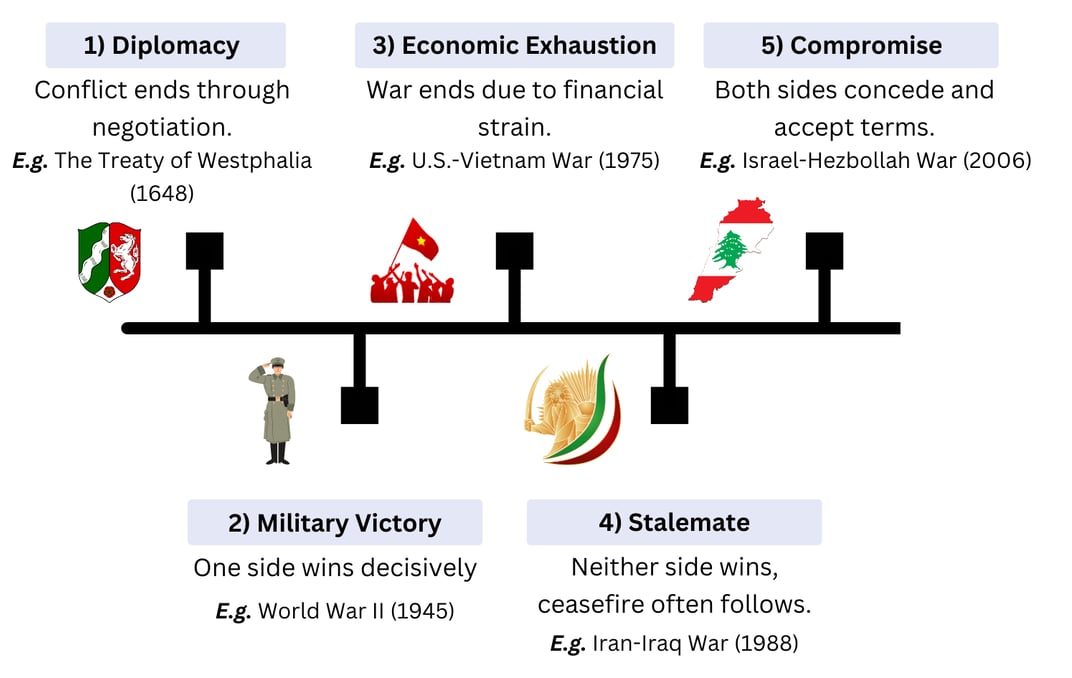

Explanation: Wars driven by The Pursuit of Power and Security represent the largest category, highlighting how nations often sought to secure their influence and territorial integrity in an unregulated international environment. Shifts in Power Dynamics and Economic Gain and Resource Competition were also significant factors, as competing states vied for influence and resources.
2. Aggregate by End Driver
This chart categorizes wars by their outcomes, showing how conflicts were most frequently resolved.
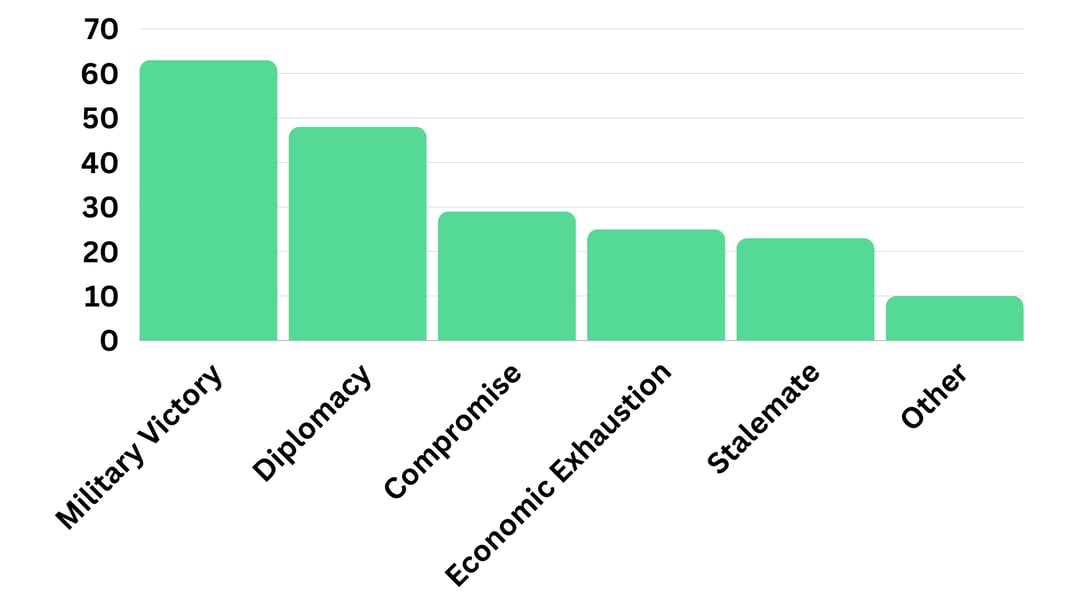

Section 4: Key Global Extra-State Conflicts Today
Extra-State conflicts involve power struggles that transcend traditional boundaries, influencing regional stability and global geopolitics. Key ongoing conflicts include:
Israel-Hamas Conflict: The intense 2023 conflict began with a surprise attack by Hamas on Israel, leading to high casualties in Gaza. Regional actors like Hezbollah have joined, with risks of further escalation and Iran’s involvement adding complexity.
Russia-Ukraine War: Since Russia’s invasion in 2022, Ukraine’s fight for territory has intensified into a proxy war between Russia and the West. This conflict impacts energy markets, food security, and alliances globally.
U.S.-China Tensions: Tensions rise as China asserts claims over Taiwan, with the U.S. supporting Taiwan through military and diplomatic means. Both countries vie for control of strategic areas like the South China Sea, increasing the potential for confrontation.
Yemen’s Civil War: What began as an internal conflict in 2014 has evolved into a regional proxy war involving Saudi Arabia and Iran. The prolonged war has devastated Yemen and created a humanitarian crisis, with peace remaining elusive.
Turkey-Kurdish Conflict: Turkey’s conflict with Kurdish groups, including the PKK and YPG, involves military operations in Syria and Iraq. This complex conflict affects stability in the region and strains Turkey’s relations with the U.S.
Somalia and Al-Shabaab: Somalia faces ongoing insurgency from Al-Shabaab, with support from neighboring countries and international allies to stabilize East Africa.
Sahel Region Insurgencies: Extremist groups linked to Al-Qaeda and ISIS drive violence in the Sahel, prompting international interventions and highlighting challenges in managing regional conflicts.
These conflicts reveal the interconnected, often intractable nature of modern warfare, influencing global alliances, economic conditions, and humanitarian issues worldwide.

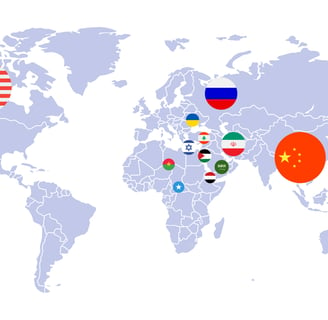
Section 5: Modeling Post-War Scenarios
This section models potential post-war outcomes using scenario-based frameworks and game theory to simulate key players’ interactions, focusing on factors like military strength, economic resilience, and alliances.
Approach and Key Scenarios: Our approach assumes strategic priorities for each player, like the U.S., China, Russia, and the EU. Based on these, we outline three scenarios:
Cooperative Stability: Players prioritize economic recovery and avoid direct confrontations, leading to a stable balance.
Competitive Escalation: Heightened rivalry and militarization, reminiscent of Cold War dynamics.
Selective Cooperation with Rivalry: Players collaborate in shared areas while maintaining strategic competition in others.
Modeling Techniques: We use game theory models, including:
Nash Equilibrium to identify stable compromises.
Prisoner’s Dilemma to assess cooperation incentives.
Utility Functions to predict strategies based on goals like economic growth or military gains.
Adaptability and Real-Time Updates: The model accounts for unexpected events (e.g., economic crises) and integrates new data, making scenario probabilities adjustable as conflicts like Israel-Hamas or Russia-Ukraine evolve.
Insights from the Model: Predicted outcomes include potential power shifts in regions like Europe and the Asia-Pacific, the impact of economic and technological competition, and alliance durability. This structured approach offers a comprehensive view of global power distribution post-conflict, aiding informed predictions of future global order.
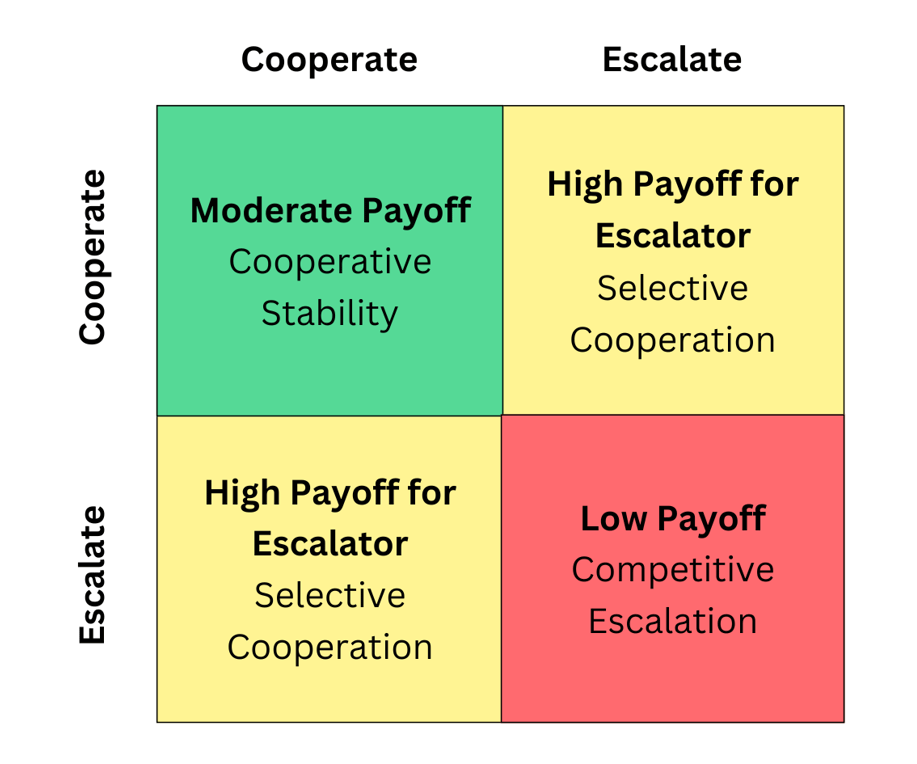

Modeled Post-War Scenarios
Scenario 1: Cooperative Stability
Overview: Key players prioritize regional stability through diplomacy and economic recovery, minimizing military actions.
Outcomes:
The U.S. supports Middle East stability and reconstruction efforts in Ukraine, balancing ties with China.
China expands economic influence in the Middle East, avoiding military entanglements.
Russia reduces military presence, focusing on economic recovery and stability in Ukraine.
The EU and Israel foster trade and stability across the Middle East.
Influence: High for the U.S. and China, moderate for Russia, with strengthened alliances in Europe and the Middle East.
Scenario 2: Competitive Escalation (Cold War Dynamics)
Overview: Military competition and regional dominance become priorities, leading to divided alliances and heightened tensions.
Outcomes:
The U.S. engages in an arms race with China and Russia, prioritizing alliances with Israel and the Quad.
China supports Iran's regional ambitions and strengthens military posture in Asia.
Russia aligns with Iran and Syria to counter Western influence.
NATO fortifies Europe, while Israel counters regional threats through aggressive security measures.
Influence: High in Asia for China, moderate in the Middle East for Russia, with strong U.S.-led alliances but limited global economic integration.
Scenario 3: Selective Cooperation with Rivalry
Overview: Players engage in selective cooperation on shared interests but maintain strategic competition elsewhere.
Outcomes:
The U.S. cooperates with China on trade while competing in Asia, maintaining support for Israel’s security.
China pursues trade with the U.S. and Israel while expanding influence in the South China Sea.
Russia collaborates with the EU on energy while supporting Iran in Syria indirectly.
The EU and Israel balance security needs with economic diplomacy across the Middle East.
Influence: High in Asia and the Middle East for China, moderate energy-based alliances for Russia, with stability in Europe and Middle Eastern partnerships.
Each scenario shows different paths for global power: Cooperative Stability fosters diplomacy, Competitive Escalation drives militarization, and Selective Cooperation balances strategic alliances with cautious rivalry. This framework provides insights into potential shifts in global power dynamics.
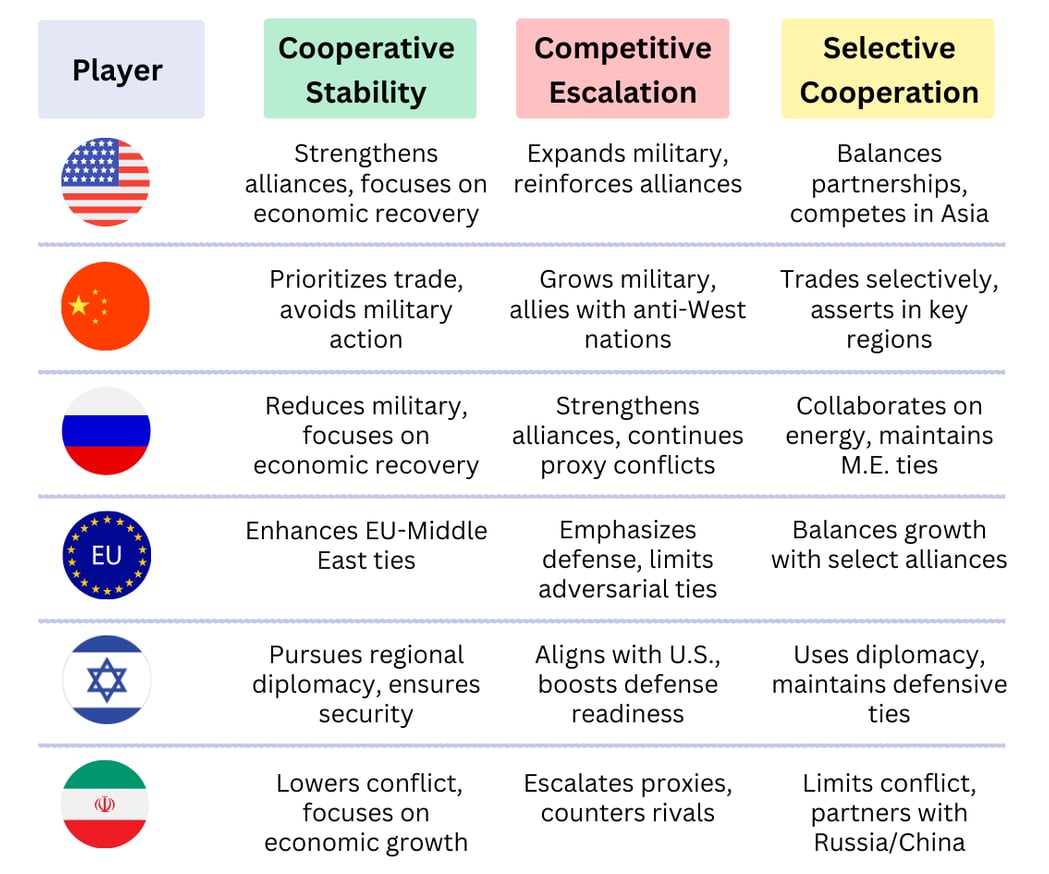

Section 6: The U.S. President's Role in Shaping Global Power Balance
The U.S. presidency significantly impacts global alliances, economic policies, and diplomacy. The next election, with candidates Kamala Harris and Donald Trump, presents two contrasting foreign policy approaches:
Kamala Harris Presidency: Multilateral Engagement
Alliances and Diplomacy: Likely to reinforce NATO and EU partnerships to counter Russian influence and support allies in Asia through the Quad.
Economic Focus: Prioritizes green technology, economic resilience, and diversified trade partnerships, reducing dependency on Chinese supply chains.
Middle East Strategy: Pursues balanced diplomacy with Iran and Saudi Arabia, maintaining counterterrorism efforts and strategic alliances with Israel.
Impact: Aims for a Cooperative Stability or Selective Cooperation scenario by building global partnerships, encouraging economic growth, and avoiding escalated military conflicts.
Donald Trump Presidency: America First and Strategic Rivalry
Alliance Strategy: May reduce NATO commitments and push Europe to increase defense autonomy. Likely to pursue bilateral agreements in Asia, reducing focus on multilateral groups.
Economic Independence: Emphasizes trade barriers with China and domestic production, favoring tariffs and reducing reliance on global supply chains.
Middle East Policy: Strong support for Israel and a hard stance on Iran, which may heighten tensions.
Impact: Could lead to Competitive Escalation or Selective Cooperation with Rivalry, emphasizing U.S. independence, strategic competition, and reduced global commitments.
Comparative Summary
Harris: Multilateral, alliance-based approach supporting stability.
Trump: National-interest-driven, potentially leading to rivalry and reduced alliances.
The next U.S. president’s policies will influence post-war scenarios, alliance structures, and global economic alignments, setting the stage for future global dynamics.
Section 7: Data Modeling – Simulating Scenario Likelihood and Tension Estimation
This section uses simulation models to predict the likelihood of three post-war scenarios—Competitive Escalation, Cooperative Stability, and Selective Cooperation—and to estimate global tension trends based on U.S. leadership (Kamala Harris or Donald Trump).
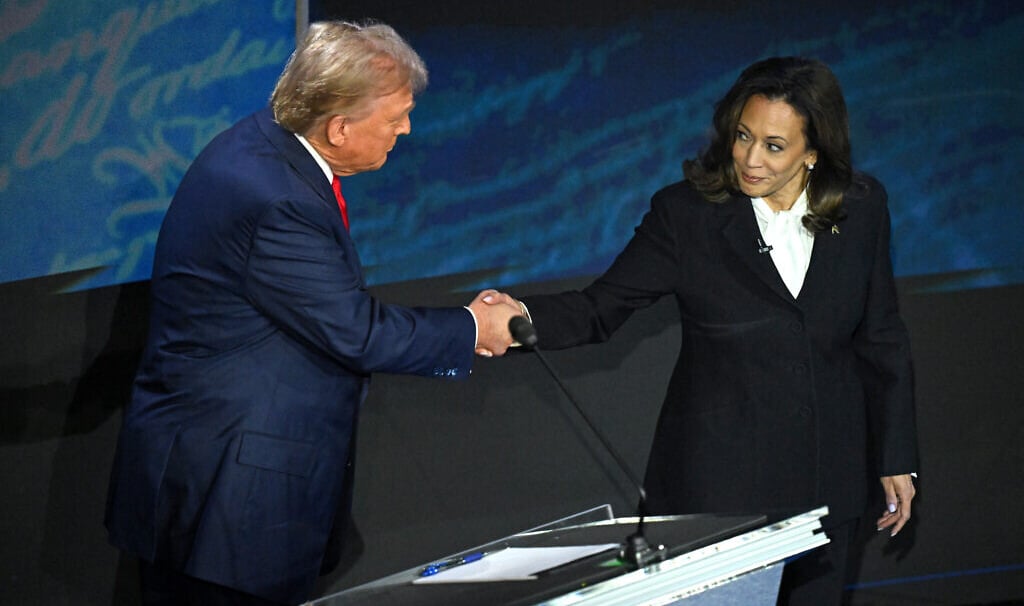

Part 1: Scenario Likelihood Modeling
Purpose: Predict the likelihood of each scenario by simulating policy decisions and key geopolitical factors.
Key Parameters:
Military Spending: Indicates readiness for conflict or stability.
Economic Interdependence: Reflects trade and stability levels.
Alliance Activity: Measures shifts and formations that either stabilize or signal competition.
Simulation Techniques:
Monte Carlo Simulation: Runs thousands of simulations based on variable adjustments.
Agent-Based Modeling: Models countries with distinct foreign policies and alliances.
U.S. Leadership Impact:
Kamala Harris: Likely to emphasize moderate military spending and alliance-building, leading to a higher probability of Cooperative Stability.
Donald Trump: Likely to increase military spending and reduce trade interdependence, raising the probability of Competitive Escalation.
Scenario Probabilities:
Harris: Cooperative Stability (72%), Selective Cooperation (21%), Competitive Escalation (7%).
Trump: Cooperative Stability (11%), Selective Cooperation (28%), Competitive Escalation (61%).
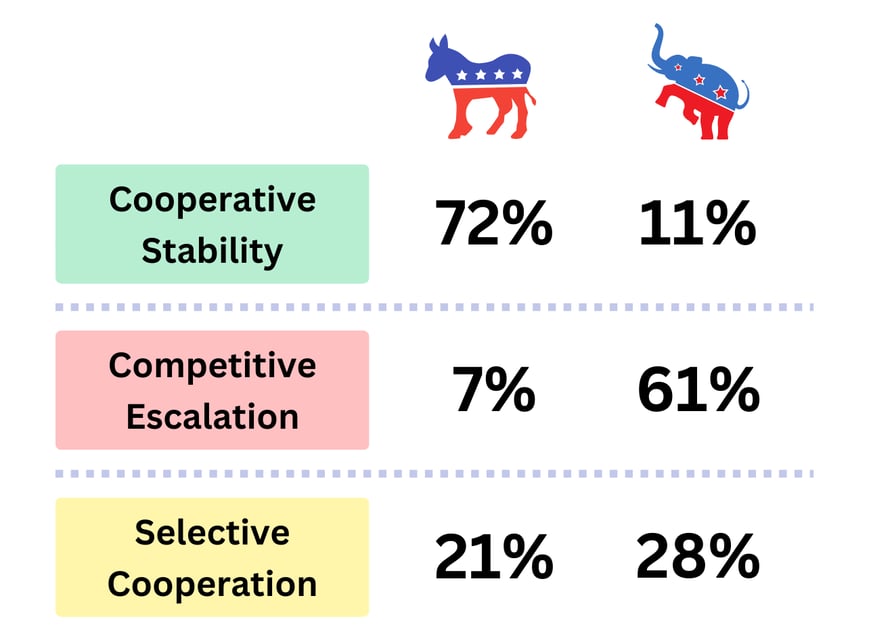

Part 2: Tension Estimation Post-Election
Purpose: Estimate tension trends based on each candidate’s policies.
Simulation Variables:
Military Posture: Tracks defense spending and overseas presence.
Alliance Volatility: Measures shifts in partnerships.
Economic Protectionism: Captures trade restrictions and tariffs.
Projected Tension Patterns:
Trump: Initial high tension due to assertive policies, stabilizing in the long term.
Harris: Tension fluctuations with ongoing diplomatic engagements, leading to higher baseline volatility.
Visual Representation: Tension over time shows an initial spike for Trump stabilizing, while Harris displays fluctuating but high tension.
The models suggest U.S. leadership will significantly influence global outcomes. Harris’s policies favor Cooperative Stability with fluctuating tension, while Trump’s approach increases the likelihood of Competitive Escalation initially, with eventual stability as other powers adjust.
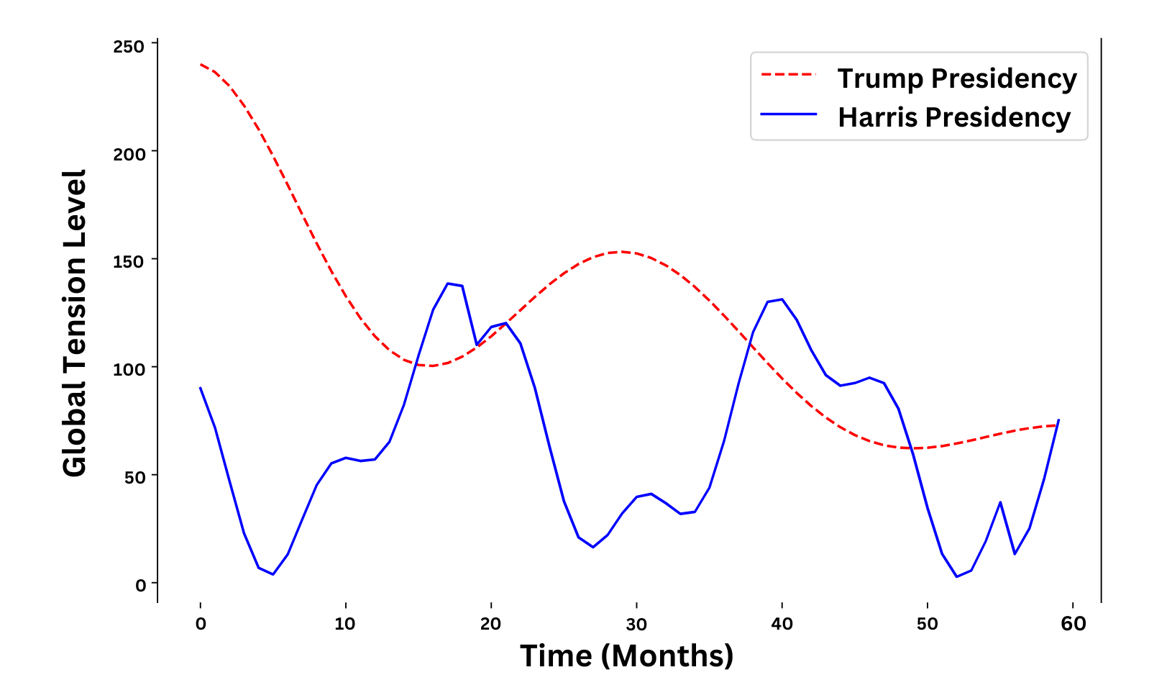

Conclusion: Projecting the Future Under Trump’s Leadership
The next U.S. presidency will be pivotal for global power dynamics. If Donald Trump is elected, his “America First” approach may shape a phased alignment of global powers.
Short-Term, Competitive Escalation: Trump’s policies would likely lead to Competitive Escalation, with heightened tensions and stronger U.S. defense measures. Trade restrictions and selective alliances would impact regions like the Middle East, increasing military demands on NATO and the Quad.
Mid-Term , Strategic Realignment: As tensions settle, Trump may shift to Strategic Realignment, negotiating with key players like Russia for reduced sanctions and stability in Ukraine. The U.S. could leverage diplomacy in the Middle East, reducing support for Iranian proxies and fostering regional stability.
Long-Term, A New World Order and Multipolar Stability: Trump’s strategy might contribute to a new multipolar world order, with the U.S., China, Russia, and the EU as central players focused on their spheres of influence. This framework could yield a stable, cooperative Middle East and a balanced global power structure.
Uncertainty and Risks: Black swan events—such as cyber warfare, climate disasters, or unexpected crises—could disrupt this path, highlighting the need for vigilance. While a stable multipolar world is an optimistic outcome, unpredictable events require adaptable strategies to sustain this balance.
